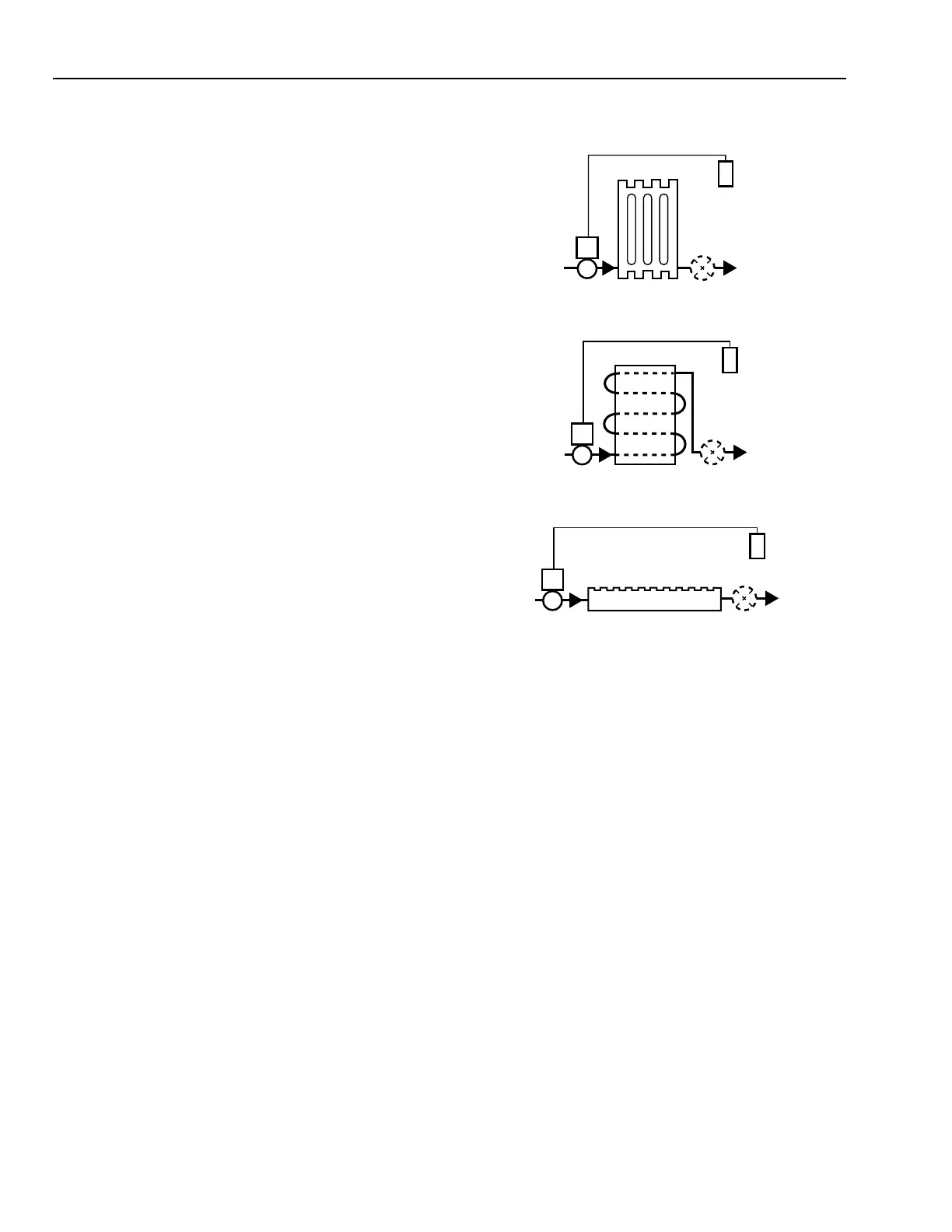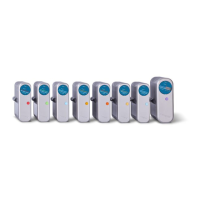ENGINEERING MANUAL OF AUTOMATIC CONTROL
INDIVIDUAL ROOM CONTROL APPLICATIONS
408
UNITARY EQUIPMENT CONTROL
GENERAL
Unitar y equipment inc ludes na tur al convection units, radiant
panels, unit hea ter s, unit v entilator s, fan coil units, and hea t pumps.
Unitar y equipment does not r equir e a centr al fan. Depending on
design, unitary equipment may perform one or all of the functions
of HVAC–ventila tion, filtr ation, heating, cooling, humidif ication,
and distr ibution. Unitar y equipment fr equentl y requir es a
distr ibution system f or steam or hot and/or c hilled water. For
information on distr ibution systems, refer to Chiller , Boiler, and
Distr ibution System Contr ol Applica tions section.
Contr ol of unitar y equipment v ar ies with system design and
may be electr ic, electr onic, pneuma tic, or dig ital. Typically, a
room ther mosta t or sensor pr ovides a signal to a contr olled
device to regulate the unit. The unit ma y use da y/night
temper atur e setpoints f or oper ation a t lower setpoints dur ing
unoccupied hea ting hour s. If the unit has a f an, a time c lock or
time pr ogram ma y be used to tur n the f an off at night and a
night temperature controller may be used to control the
temperature within night limits.
NATURAL CONVECTION UNITS
Natur al convection units use steam or cir culating hot w ater
to route heat through a combination of radiation and natural
dr aft convection units. They can suppl y total space hea t or
supplemental hea t to the per imeter of a b uilding to of fset hea t
loss. The units ar e classified as follows:
— Radiator: A steel or cast iron unit through which hot water
or steam circulates. Heating is by radiation and convection.
— Convector: A coil, finned tube, or electric heat element
in an enclosure with openings at the top and bottom for
convection circulation of air.
— Baseboard: A unit installed at the base of a wall. Hot water
or steam circulates through a finned tube or a cast iron
enclosure. Air circulates through the unit by convection.
Typically, a na tur al convection unit is contr olled man ually
or b y a room ther mostat contr olling a valve or electr ic heat
coil. Figure 12 shows the contr ol loops for indi vidual r oom
contr ol. As space temper atur e falls below the ther mostat
setpoint, the valve opens and hot w ater or steam cir culates
thr ough the unit. Na tur al convection tr ansfers heat to war m the
space and the ther mosta t r esets the valve position as space
temperature reaches setpoint. Depending on space size, the
ther mosta t ma y contr ol one valve or several valves.
Fig. 12. Natural Convection Units.
Contr ol of these units can be modula ting or tw o position. On
long sections of steam-f ed base boar d or f inned-tube r adia tion,
only two-position contr ol should be used because modula ting
control causes steam to condense near the supply end of long
units at light loads.
When used as supplemental heat for perimeter areas, natural
convection units can be connected to centr al contr ol systems.
As heating requirements change with outdoor conditions and
solar g ain, the units can be r eset or shut do wn by centr al contr ol.
In some a pplica tions, the convection units ar e slaved off a VAV
box controller in sequence with or in lieu of reheat.
Electric resistance heating elements are also used in natural
convection equipment. The ther mosta t contr ols electr ic cur rent
thr ough the elements f or hea t convection. A modula ting
thermostat and a step controller or electronic modulating control
can also control the heating element.
HOT WATER
OR STEAM
SUPPLY
RETURN
STEAM TRAP
(IF STEAM SUPPLY)
RETURN
STEAM TRAP
(IF STEAM SUPPLY)
THERMOSTAT
HOT WATER
OR STEAM
SUPPLY
THERMOSTAT
RADIATOR
CONVECTOR
RETURN
STEAM TRAP
(IF STEAM SUPPLY)
HOT WATER
OR STEAM
SUPPLY
THERMOSTAT
BASEBOARD
C3018

